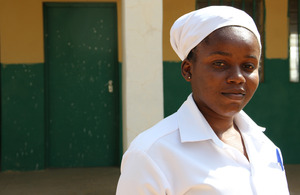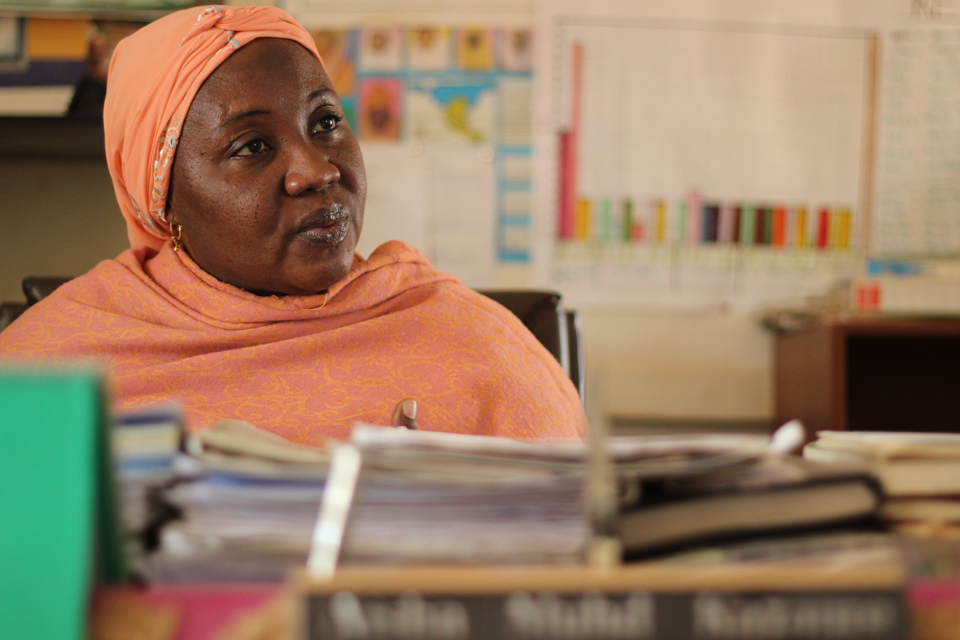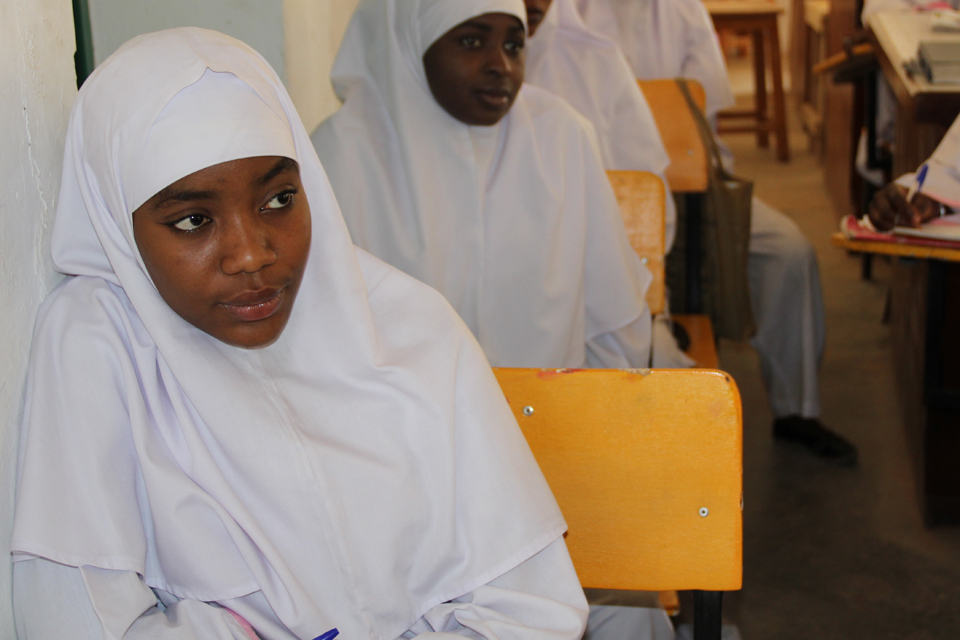Called to be a midwife in northern Nigeria
How a midwifery school is inspiring a new generation of midwives

Njideka is a midwife in northern Nigeria – one of the most dangerous places in the world to give birth. Lindsay Mgbor/DFID
International day of the Midwife on the 5 May 2012 celebrates midwives worldwide and highlights the challenges and achievements they are making every day to save mothers’ and babies’ lives.
Aisha Moh’d Kazaure is no ordinary midwife. She’s the principal of a midwifery school in Jigawa state in northern Nigeria. In Jigawa, 1 in 23 women die in childbirth and 1 in 10 newborns do not survive - making it one of the most dangerous places in the world to give birth. But with support from UK aid and the local government, Aisha is changing lives. She’s set up the very first midwifery school in Jigawa state.
Missing midwives
“We have the highest maternal and infant mortality rate in the country because our workforce is very, very low. People deliver at home. You lose the baby in most instances and then you lose the mother,” explains Aisha.

Aisha in her office in Jigawa. Picture credit Lindsay Mgbor/DFID
Jigawa is predominantly rural and access to healthcare is restricted. Last year, there were fewer than 30 trained midwives in the whole state for a population of nearly 5 million people. To fill such a stark shortage, the local government is employing female health workers from other states to work in the region, which is already saving lives. However, as Aisha explains “invariably, one way or another they would like to go back to their own state.”
This is why Aisha was inspired to become a teacher. “I saw the good in what the teaching was doing, at least you are bringing up new people too, to take over when you are not there.”
A new school
The new school was set-up in March 2010 with support from PATHS2, a UK aid funded programme. PATHS2 helped Aisha every step of the way - from developing the curriculum and getting accreditation to providing teaching aids, books and essential equipment.
“They have been of great help to us because they sponsor us to go to other schools of midwifery to understudy them so that we can establish our own. PATHS2 is always there to give us support. Without that support, all these things might have not been possible for us,” says Aisha.
Star students
Satarau, 21, is a student from Gwiwa in Jigawa. “I wanted to become a midwife in order to save women and children,” she says. Her father, who works in healthcare, encouraged her to join the school. Satarau’s situation is unique though - many girls do not complete secondary school and often marry very young. Her dream is for girls in her community “to have the opportunity to come to my school so that they too will have the knowledge of what I’m learning now.”

Star student: Satarau wants to become a midwife to save womens' and babies' lives. Picture: Lindsay Mgbor/DFID
In order to join the midwifery programme students must have credits in science and English. This is a big challenge though as there is a scarcity of girls who qualify as women’s illiteracy is 94% in Jigawa.
In order to encourage female students to join the programme, Aisha gives career talks at schools to help convince parents to let their children attend the midwifery course. Her hope is that by 2015 the school will have trained 200-300 students who will work within Jigawa state.
Female faces
Safiya, 23, another student in Satarau’s class, explains how her auntie died having her first child. She was 25 years old and the child did not survive. “If I had the knowledge, I would have helped her,” says Safiya.
Many women have serious problems accessing healthcare because most staff are male. “It is a sort of religious and traditional restriction,” explains Aisha. “So now we have females in the hospitals which I think will encourage women to attend more, and that will reduce the maternal and infant mortality rate within the state.”
From midwife to mentor
Sherifa, 21, shows signs of following in her principal’s footsteps. “I want to be like our principal, I see her as a mentor. She’s very inspiring.” Sherifa dreams of furthering her career to teach others to become midwives and help save even more lives: ”This is what I’m called for,” she says. “This is what I’m supposed to do.”

From midwife to mentor: Sherifa wants to follow in her principal's footsteps. "This is what I'm called for," she says. "This is what I'm suppose to do." Picture: Lindsay Mgbor/DFID
Videos
Mother’s Day wishes
women in Nigeria share their hopes for their children’s futures
The way forward
the road to better maternal health care in Nigeria (Film by Chris Morgan)
Facts and stats
In April 2012, the British Government started a new scheme - Women for Health - to support 7,000 girls and women to be in training as health workers in northern Nigeria by 2016.
A key part of the scheme will be providing a foundation year in 15 schools for girls and women who need additional support to meet entry standards.
UK aid from the Department for International Development will save the lives of at least 50,000 women during pregnancy and childbirth and 250,000 newborn babies by 2015.
UK aid will also support at least two million safe deliveries, ensuring long lasting improvements in quality maternity services.